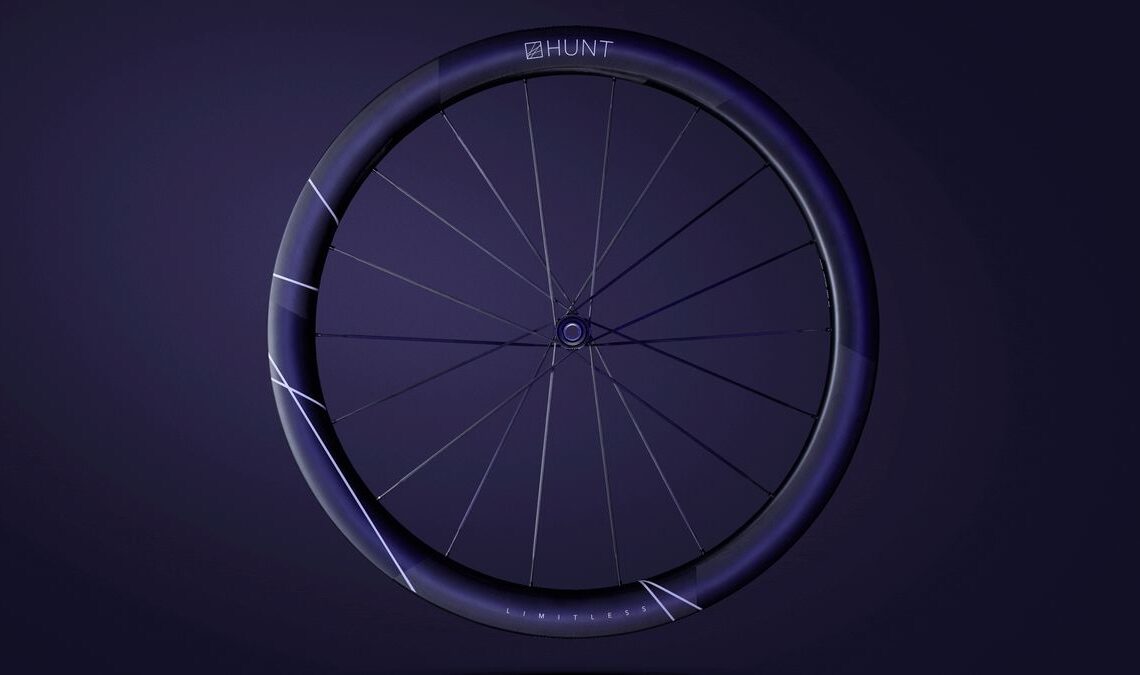As race bikes seem to be converging on a single focus, so wheels seem to be slowly following suit. We see far fewer riders opt for crazy deep wheelsets in an effort just to cheat the wind, and we also see far fewer opting for extremely shallow climbing wheels. Hunt’s all-new SUB50 Limitless wheels very much fit into this trend, aiming to be the fastest wheel option for the majority of riders for the majority of situations.
Hunt claims the SUB50 is the fastest wheelset up to and including 50mm deep, when you consider drag-to-weight and drag-to-depth ratios, rather than outright wattage at a specified yaw and speed. 23mm internal widths front and rear are certainly wide, but the rear rim’s 34.2mm external width is extremely chunky, but actually a hair narrower than the current Hunt 48 Limitless wheelset. The wheels are optimised for 28-30mm tyres, but from our reading of the extensive press material and white paper created by Hunt, there is a leaning towards 30mm being the favoured width.
New rim profiles
Hunt already has a pair of wheelsets that straddle the 50mm depth. The Hunt 48 Limitless, and the Hunt 60 Limitless. Given the SUB50 is only 1.5mm deeper than the 48 Limitless it may not be a surprise to find that that wheelset is phased out in the future. The 48 Limitless was also claimed to be the fastest sub-50 mm wheelset.
The SUB50 differs from the 48 in that it has differing front and rear profiles, as seen below. Both rims are 49.5mm deep, but the front wheel is wider, with a more pronounced U-shape, whereas the rear is narrower (34.2mm plays 30mm). This narrower rear profile is an effort to shave grams, reducing the overall system weight to 1,380g, or 1,428g if you swap the carbon spokes for steel ones. This is a 238g saving over the 48 Limitless.
Given the air flowing over the rear is turbulent and dirty, Hunt has opted to prioritise weight savings at the rear, sacrificing a bit of drag reduction. This is very much in keeping with the design philosophy we’re seeing on many new bikes, where aero savings are made at the leading edges, and weight savings are made at the rear.
Wider rims for wider tyres
As the shackles of rim brakes have been cast off, bikes have slowly…
Click Here to Read the Full Original Article at CyclingNews RSS Feed…

